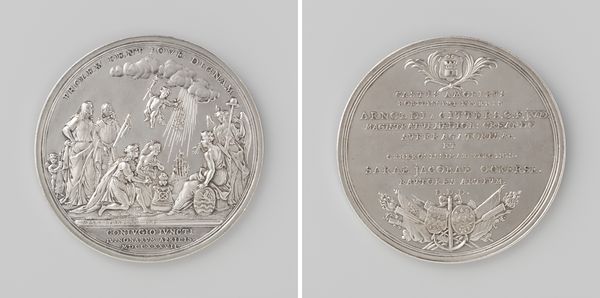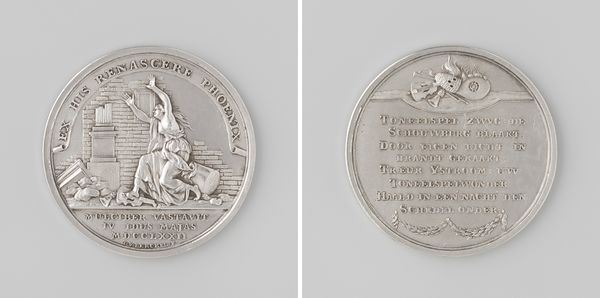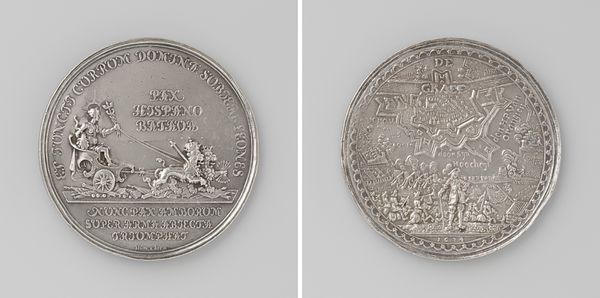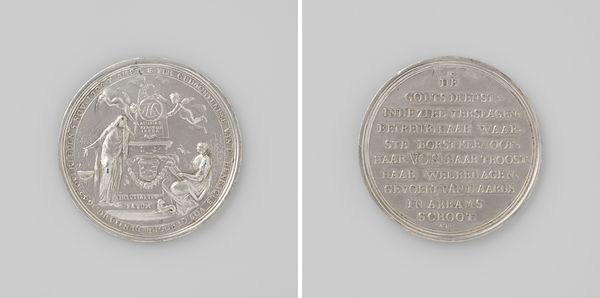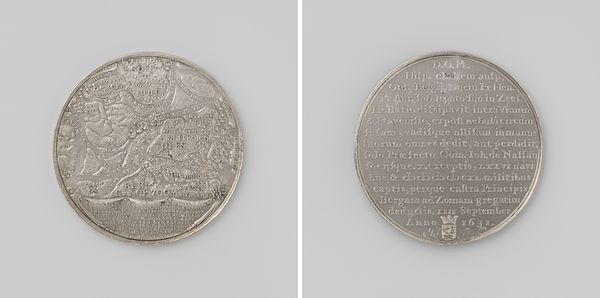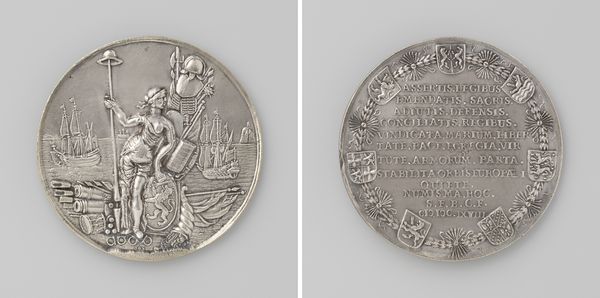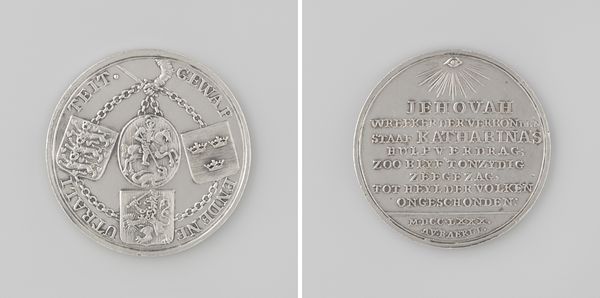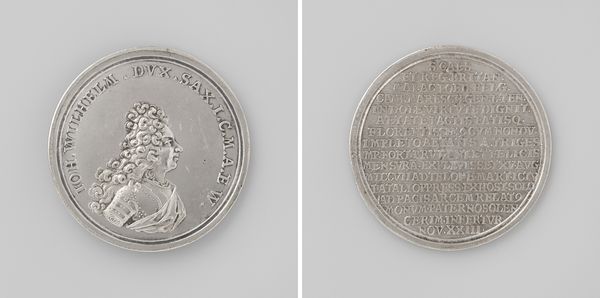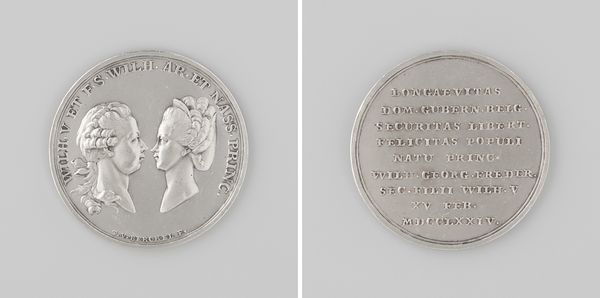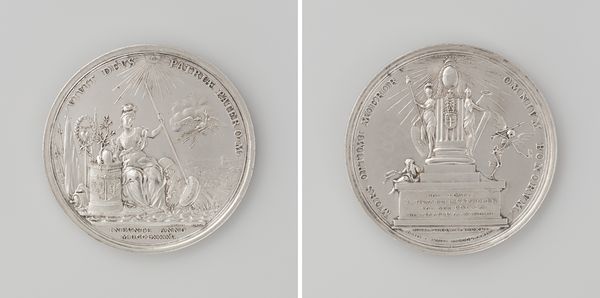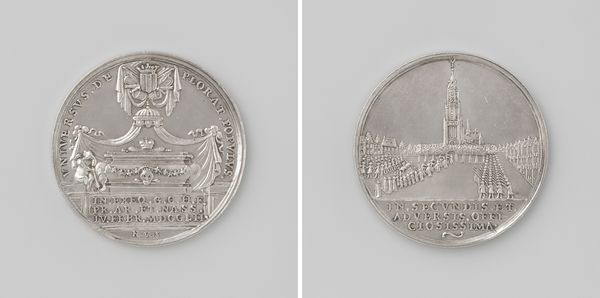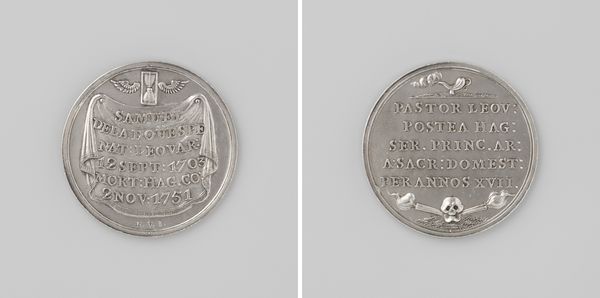
Verheffing van de prins van Oranje tot stadhouder, penning uitgedeeld aan de wachthebbende burgers van de stad Amsterdam ter ere van de doortocht van de prins door de stad 1747
0:00
0:00
metal, relief, sculpture
#
baroque
#
metal
#
relief
#
sculpture
#
history-painting
Dimensions: diameter 3.2 cm, weight 10.29 gr
Copyright: Rijks Museum: Open Domain
Editor: Here we have "Verheffing van de prins van Oranje tot stadhouder," a medal created by Johann Conrad Marmé in 1747. It was presented to Amsterdam citizens guarding the city as the Prince of Orange passed through. What strikes me is how official it feels, yet there's a symbolic landscape on the one side. How do you read this object? Curator: Well, first it's vital to consider the socio-political context. 1747 marked a period of political instability, and the elevation of the Prince of Orange to Stadtholder was, in part, a response to public pressure and a desire for strong leadership. This medal isn't just an artistic object; it’s a piece of propaganda, carefully crafted to reinforce the Prince’s legitimacy. Editor: Propaganda, even on something this small? Curator: Absolutely. The medal circulated amongst Amsterdam’s citizenry, a constant, tangible reminder of the new order. Notice the imagery, especially the allegorical figure and the blazing altar. What does that suggest to you? Editor: It feels like...triumph and tradition? Maybe an appeal to established power through symbols everyone would recognize? Curator: Precisely. The formal Baroque style further emphasizes the gravitas of the occasion and the authority of the Prince. The very act of commissioning such medals underscores how art was wielded to shape public perception and cement power structures. This wasn’t just about honoring the Prince, it was about securing his image in the collective consciousness. Editor: So the medal’s function, its role in a specific historical moment, is almost as important as its aesthetic value. I see it in a new way now. Curator: Exactly! Examining art in relation to history reveals so much more. It moves beyond simple aesthetics into an understanding of power, persuasion, and public memory.
Comments
No comments
Be the first to comment and join the conversation on the ultimate creative platform.
